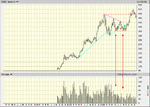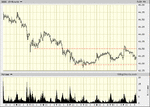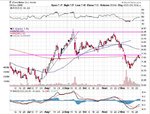Hi Damian, I was wondering how do you then determine your exit point? "as long as possible" is obviously what we all want to do with our trades

I usually have a fixed target for my first lot (when scaling out and trading two lots), and try to get the most out of my second. My first target is based on my backtesting and papertrading. I'm using the ATR to determine the stop and try to have at least a 1:2 risk reward ratio. So basically my first target is at 2x ATR, after that I move my stop to breakeven. I then exit the second lot at 3x ATR. It would be much better if I found a way to manage the trade but am still looking for a way to improve the exit strategy into something more dynamic.
I have reviewed hundreds of trades and found that almost half of those travel as far as 4x ATR. I would call that the maximum favourable excursion. For instance on DAX that was about 15-20 points last couple of weeks. Using ATR I'm already using something more dynamic than a fixed target of say 10 or 15 points in each market situation. Depending on the volatility 10 points can be very close or rather far away. Sometimes DAX ranges in 30-40 points, other times DAX moves 100 points in a single day. Now especially in those trending days I fail to get the best out of a trade, when it's (in hindsight) the easiest to do so!
I'm now looking and testing several different strategies to see which one works best on getting more profits out of my trades:
- exit when price is approach next S/R level
- exit only when a new setup appears that tells you to reverse your current position
- exit on break of trendline
...
If you have anything to add or any suggestion, I'd be welcome to hear, as I'm sure would thebull27.





